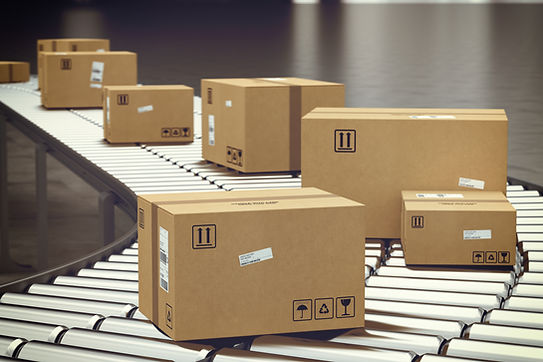
Supply Chain Management

Supplier Relationship Management (SRM)
SRM refers to the strategic approach of managing relationships with suppliers who provide goods, materials, or services to an organization. It involves a systematic and ongoing process of evaluating supplier performance, fostering collaboration, and optimizing the overall supply chain.
Salient Features of SRM for Small Businesses:
-
Supplier Evaluation and Selection: Carefully assess potential vendors based on factors like quality, price, reliability, and responsiveness.
-
Performance Monitoring: Track supplier performance metrics like on-time delivery, product quality, and communication.
-
Collaboration and Communication: Foster open communication channels with your suppliers to address issues proactively and identify cost-saving opportunities.
-
Risk Management: Identify and mitigate potential risks associated with your suppliers, such as supply chain disruptions or price fluctuations.
Introduction to Supplier Relationship Management (SRM)

Inventory Management
It's the process of overseeing and controlling the flow of goods and materials within a business. This includes raw materials, work-in-progress, and finished products. Effective inventory management ensures you have the right amount of stock at the right time to meet customer demand without incurring unnecessary costs.
Salient Features:
-
Accurate Inventory Levels: Real-time tracking of stock quantities to avoid stockouts and overstocking.
-
Demand Forecasting: Predicting future sales trends to optimize order quantities.
-
Optimized Ordering: Determining the ideal reorder points to maintain sufficient stock and minimize carrying costs.
-
Warehouse Organization: Efficient storage and retrieval systems for smooth operations.
-
Quality Control: Implementing measures to ensure product quality and minimize spoilage or defects.
Introduction to Inventory Management

Procurement Software
Procurement software automates and streamlines the process of acquiring goods and services for your business. This includes tasks like creating purchase orders, managing supplier relationships, tracking inventory, and processing invoices.
Here's a breakdown of its features, benefits, and considerations for small businesses:
Salient Features:
-
Purchase Order Management: Create, track, and approve purchase orders electronically.
-
Supplier Management: Manage supplier information, track performance, and automate communication.
-
Cataloging and Inventory Management: Maintain a centralized catalog of goods and services, track inventory levels, and set reorder points.
-
Workflow Automation: Automate approval processes, routing purchase orders, and invoice processing.
-
Spend Analysis: Gain insights into spending patterns, identify cost-saving opportunities, and optimize supplier relationships.
-
Reporting and Analytics: Generate reports on procurement activities, track key performance indicators (KPIs), and gain valuable insights.
Introduction to Procurement Software

Warehouse Management System
A Warehouse Management System (WMS) is a software application designed to optimize and automate various processes within a warehouse. It helps manage the flow of goods, from receiving and storing inventory to picking, packing, and shipping orders.
Here's a breakdown of its features, benefits, and considerations for small businesses:
Salient Features:
-
Inventory Management: Track inventory levels in real-time, manage stock locations, and set reorder points.
-
Order Management: Process orders efficiently, track order status, and optimize picking routes.
-
Receiving and Put-away: Manage incoming goods, assign storage locations, and update inventory records.
-
Picking and Packing: Automate picking processes, generate packing lists, and ensure accurate order fulfillment.
-
Shipping Management: Generate shipping labels, track shipments, and integrate with shipping carriers.
-
Reporting and Analytics: Gain insights into warehouse performance, identify areas for improvement, and track key metrics.
Introduction to Warehouse Management System

Transportation Management System
A Transportation Management System (TMS) is a software application designed to streamline and optimize the transportation of goods throughout your supply chain. It helps manage everything from selecting carriers and negotiating rates to tracking shipments and managing delivery logistics.
Here's a breakdown of its features, benefits, and considerations for small businesses:
Salient Features:
-
Carrier Management: Compare rates, negotiate contracts, and manage relationships with different carriers.
-
Shipment Management: Create and track shipments, generate bills of lading, and monitor delivery progress.
-
Route Optimization: Plan efficient routes for deliveries, minimizing transportation costs and fuel consumption.
-
Real-Time Tracking: Track shipments in real-time, providing visibility and improving customer communication.
-
Cost Management: Analyze transportation costs, identify savings opportunities, and optimize pricing strategies.
-
Reporting and Analytics: Gain insights into transportation performance, identify trends, and make data-driven decisions.
Introduction to Transportation Management System





